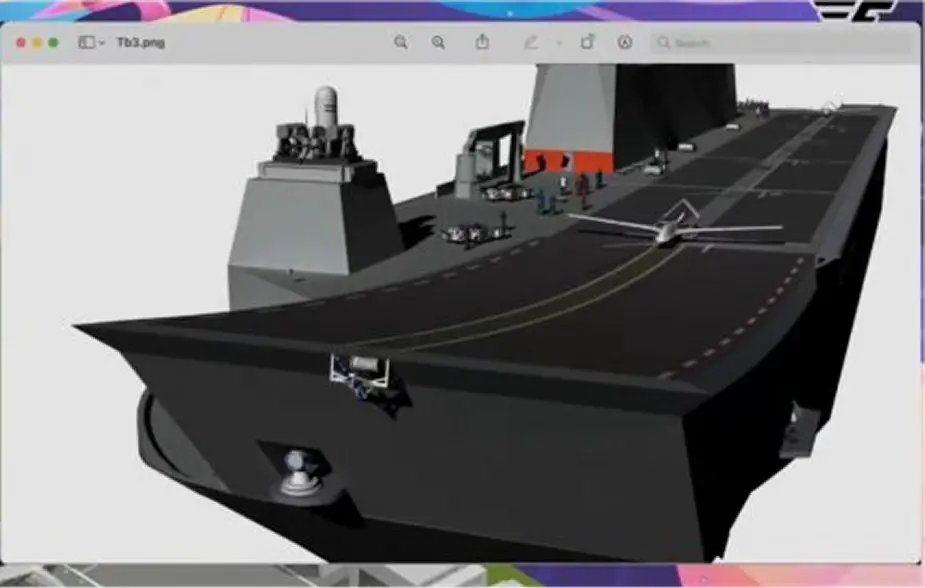Breaking news
Turkey unveils new image of the future TCG Anadolu with a drone.
According to information published by Yeni Safak on May 11, 2021, during a Youtube Live Stream, Haluk Bayraktar shared a new image of the future TCG Anadolu with the unmanned aerial vehicle (UAV) Bayraktar TB3 able to land on the ship.
Follow Navy Recognition on Google News at this link
 Artist rendering of the future TCG Anadolu with a TB3 Bayraktar UAV (Picture source: Twitter account of Alert5)
Artist rendering of the future TCG Anadolu with a TB3 Bayraktar UAV (Picture source: Twitter account of Alert5)
TCG Anadolu is an amphibious assault ship that can be configured as a light aircraft carrier.
The dimensions of the final design are 231 meters (757 ft 10 in) in length, a 32-meter (105 ft 0 in) beam, a 6.8-meter (22 ft 4 in) draft, and 58 meters (190 ft 3 in) in height. Its displacement will be 24,660 tons (in "light aircraft carrier" mission configuration) or 27,079 tons (in "LHD" mission configuration).
Its maximum speed will be 21.5 knots (39.8 km/h; 24.7 mph) (in "light aircraft carrier" configuration) or 29 knots (54 km/h; 33 mph) (in "LHD" configuration); while its maximum range will be 9,000 nautical miles (17,000 km; 10,000 mi) at economical speed.
The Sedef–Navantia consortium won the tender for the LPD/LHD project of the Turkish Navy and TCG Anadolu (L 400) will use the same design as that of the Spanish ship SPS Juan Carlos I (L 61). All of the ship's weapons system will be procured by Turkish firms Aselsan and Havelsan. The ship will feature a Turkish combat management system, namely the GENESIS-ADVENT, which will be integrated by Aselsan and Havelsan. Aircraft Landing is assisted in all weather conditions by Leonardo SPN-720 Precision Approach Radar.
The new aircraft TB3 being developed is a naval version of the Bayraktar TB2 equipped with a local engine developed by TEI.
The Bayraktar TB2 is a Turkish medium altitude long endurance (MALE) unmanned combat aerial vehicle (UCAV) capable of remotely controlled or autonomous flight operations. It is manufactured by Turkey′s Baykar company primarily for the Turkish Armed Forces.
The aircraft is monitored and controlled by aircrew in the Ground Control Station, including weapons employment, via the Türksat satellite. Bayraktar means "ensign" or "standard-bearer" in Turkish. The development of the UAV has been largely credited to Selçuk Bayraktar, a former MIT graduate student and son of Özdemir Bayraktar.




























